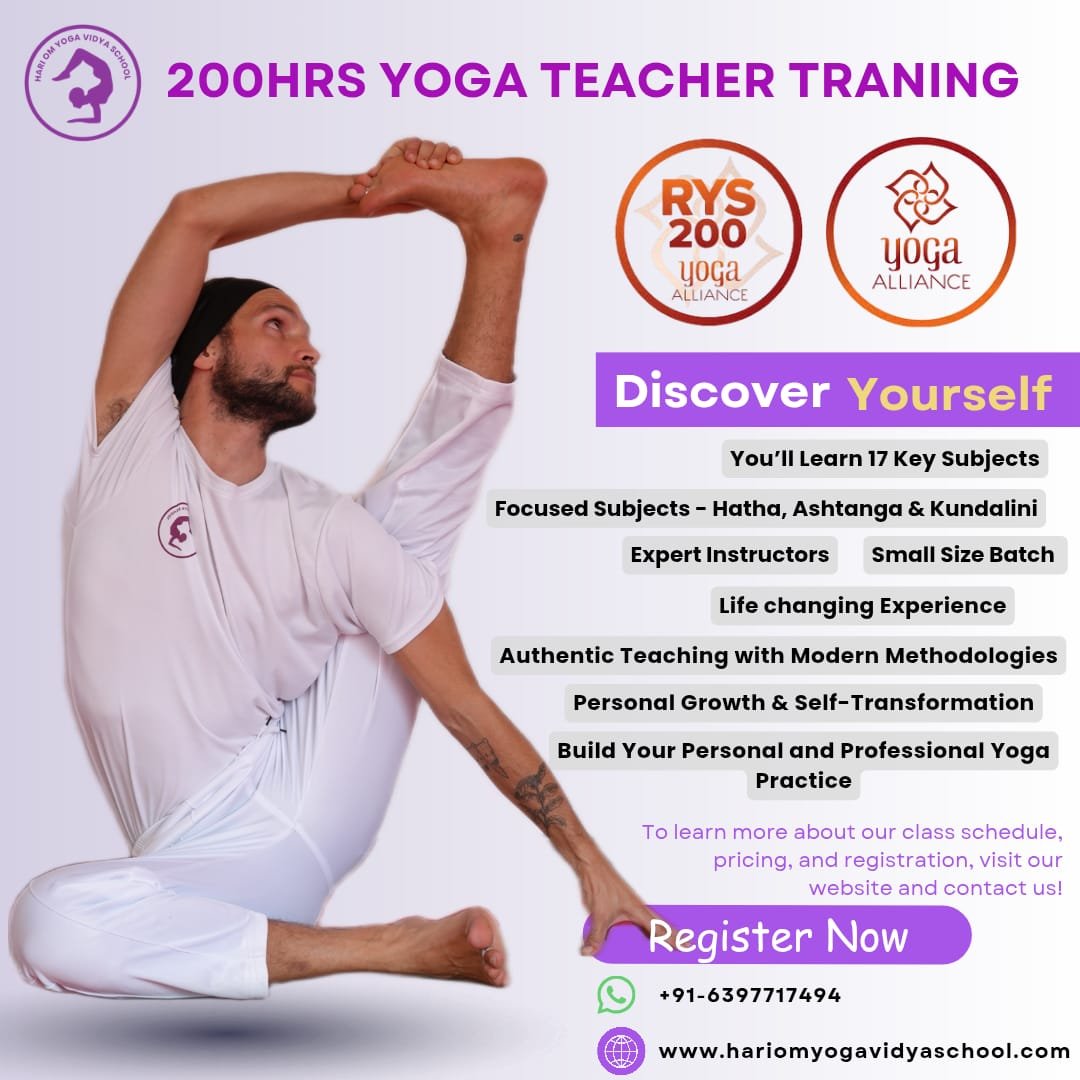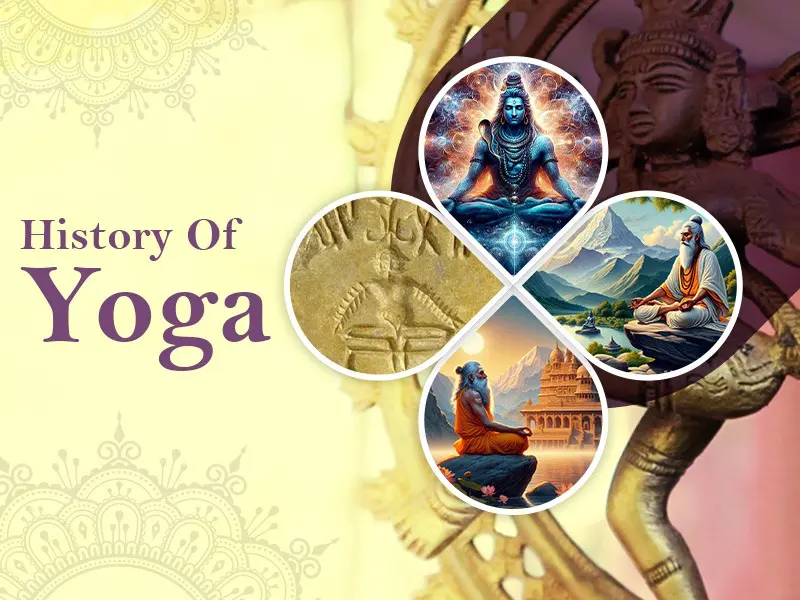The Origin of Yoga – Where It All Began
The origin of yoga dates back thousands of years, far beyond the boundaries of written history. Scholars believe that yoga first emerged during the Indus Valley Civilization around 3000 BCE, as evidenced by ancient seals showing figures seated in meditative postures. This early connection between posture, breath, and stillness reveals that even in its earliest form, yoga was not merely physical, it was deeply spiritual.
Rooted in ancient Indian philosophy, yoga was first codified in the Vedas, the oldest sacred texts known to humanity. The Vedas referenced rituals, chants, and meditations that served as the foundation for yogic thought. As time progressed, the Upanishads explored the inner dimensions of the human experience, laying further groundwork for yoga as a spiritual discipline focused on self-realization.
This historical background of yoga shows how it evolved from a sacred path practiced by rishis in the forests to a structured spiritual discipline meant to harmonize body, mind, and soul. Yoga was never confined to the mat—it was a way of living, of aligning with cosmic truth.
A Brief History of Yoga and Its Development Over Time
The history of yoga unfolds across multiple eras, each shaping its teachings in unique ways. In the Vedic period, yoga was predominantly spiritual and ritualistic. It was practiced through chants, sacrifices, and meditations that connected the practitioner with the divine. Moving into the pre-classical era, yoga became more introspective, with texts like the Upanishads and the Bhagavad Gita describing self-inquiry, dharma, and union with the higher self.
The classical period of yoga was defined by the sage Patanjali, who organized yogic philosophy into the Yoga Sutras. This was the first time yoga was presented systematically, with the well-known Eight Limbs of Yoga (Ashtanga). Patanjali’s work became the guiding light for spiritual aspirants seeking inner discipline and liberation.
In the post-classical period, yoga shifted toward the physical body as a tool for transcendence. Tantric and Hatha yoga traditions emphasized asanas, pranayama, and energy work. Finally, in the modern era, yoga traveled beyond India’s borders and reached the global stage. Teachers like Swami Vivekananda, T. Krishnamacharya, B.K.S. Iyengar, and Pattabhi Jois brought yoga to the West, adapting its teachings to meet the needs of modern society.
This layered development of yoga reveals its incredible adaptability, remaining rooted in ancient wisdom while evolving for contemporary relevance.
Read More: Why Is Kundalini Yoga Dangerous? The Truth About Its Risks and Rewards
Philosophy of Yoga – The Spiritual Foundation
At its core, yoga is not just about bending the body; it’s about aligning with truth. The philosophy of yoga centers on achieving union, union between the individual self and the universal consciousness. This union is not theoretical; it is experiential and realized through ethical living, discipline, introspection, and surrender.
The foundational framework is outlined in Patanjali’s Ashtanga Yoga: Yama, Niyama, Asana, Pranayama, Pratyahara, Dharana, Dhyana, and Samadhi. These stages offer a progressive journey, from moral grounding to mastery over the mind, culminating in spiritual liberation.
Yoga philosophy emphasizes inner purification and self-awareness. It teaches that the body is a vehicle, the breath is a bridge, and the mind is the key. The ultimate aim is moksha, freedom from suffering and realization of one’s true self.
The Six Classical Philosophical Schools of India
To fully appreciate the historical background of yoga, it’s helpful to understand its place among the six classical schools of Indian philosophy: Sankhya, Yoga, Nyaya, Vaisheshika, Mimamsa, and Vedanta.
The Yoga school, attributed to Patanjali, builds upon Sankhya’s metaphysics and outlines practical methods to still the mind and attain liberation. Unlike abstract philosophies, yoga offers tools for direct experience. While Vedanta explores the nature of self and reality, yoga guides the practitioner to live that truth through discipline, focus, and surrender.
Together, these schools form a vibrant intellectual and spiritual ecosystem, within which yoga stands as a living, breathing path to self-realization.
Types of Yoga That Emerged Through the Ages
As yoga evolved, it gave rise to various styles and branches. Each type of yoga retains the essence of the original teachings but adapts them for specific needs, temperaments, and intentions.
Ashtanga Yoga
Rooted in Patanjali’s Eight Limbs, Ashtanga Yoga was later popularized by Pattabhi Jois as a dynamic, physically demanding practice. It synchronizes breath with a series of postures in a flowing sequence, cultivating strength, focus, and internal heat.
Hatha Yoga
Hatha Yoga is one of the most accessible and widely practiced forms. It emphasizes balance between effort and ease through physical postures (asanas), breathwork (pranayama), and meditation. It prepares the body and mind for higher spiritual practices.
Kundalini Yoga
Kundalini Yoga focuses on awakening the dormant energy at the base of the spine. Through a combination of kriyas, breathwork, chanting, and meditation, it activates energy centers (chakras) and facilitates spiritual awakening.
Iyengar Yoga
Developed by B.K.S. Iyengar, this style emphasizes alignment and precision. Props such as blocks and straps are used to support the body and enhance awareness. Iyengar Yoga is therapeutic, detailed, and accessible for practitioners of all levels.
Viniyoga
Viniyoga is a personalized, adaptive style of yoga that honors the uniqueness of each practitioner. It emphasizes breath-centered movement, mindful sequencing, and individual customization, making it ideal for therapy and holistic health.
Power Yoga
A modern, fitness-oriented adaptation of traditional practices, Power Yoga is energetic and athletic. It combines strength-building movements with vinyasa-style flow, appealing to those seeking physical intensity and dynamic movement.
Bikram Yoga
Practiced in a heated room, Bikram Yoga follows a fixed sequence of 26 postures and two breathing exercises. The heat is believed to enhance flexibility and detoxification, although it’s more physically than spiritually oriented.
Kripalu Yoga
Kripalu Yoga is a gentle, introspective practice that blends movement with self-inquiry. It encourages compassion, non-judgment, and emotional healing, making it suitable for beginners and those seeking inner connection.
Yin Yoga
This deeply meditative practice involves holding passive postures for extended periods. Yin Yoga targets connective tissues and fascia, promoting flexibility and stillness. It is a complementary style to more active practices and supports emotional release.
Health Benefits of Yoga Backed by Ancient Wisdom
The health benefits of yoga are not just anecdotal, they are rooted in ancient Ayurvedic knowledge and validated by modern science. Regular yoga practice enhances flexibility, improves posture, boosts circulation, and supports immune function. It balances hormones, reduces stress, and improves mental clarity.
From an Ayurvedic perspective, yoga supports digestion, regulates energy flow (prana), and maintains harmony among the three doshas, Vata, Pitta, and Kapha. These principles reflect how yoga goes beyond exercise, it is a complete system for maintaining holistic health.
Emotionally, yoga reduces anxiety, fosters mindfulness, and promotes resilience. Spiritually, it connects practitioners to a sense of purpose, peace, and deeper awareness. This is why the development of yoga has always been closely tied to human well-being on every level.
Yoga for Health and Wellness – Practices That Transform
Yoga is not just a fitness trend; it is a transformational tool. Incorporating yoga into daily life enhances both inner and outer health. Whether it’s through a few sun salutations in the morning, mindful breathing during stressful moments, or quiet meditation before bed, yoga becomes a steady companion in the pursuit of wellness.
Its timeless teachings remind us to align with nature, listen to our bodies, and live with intention. By choosing yoga, we’re not just stretching muscles—we’re expanding consciousness.
As more people seek natural, sustainable ways to stay well, yoga stands as a beacon of hope. It teaches us to be present, to breathe fully, and to embrace life with compassion and strength.
Conclusion
The history of yoga is not confined to the past, it is alive in every breath, posture, and intention we carry onto the mat. From its origin in the Vedic age to its development into diverse forms, yoga has remained a guiding force for human transformation.
Understanding the historical background of yoga enriches our appreciation for this sacred tradition. It reminds us that yoga is not just about movement, it’s a path to stillness, self-discovery, and harmony.
As yoga continues to evolve, it remains rooted in timeless wisdom. Whether you’re practicing Hatha, Kundalini, or Yin, you are participating in a living legacy that stretches across millennia. Embrace it, live it, and let it lead you inward, toward truth, health, and peace.
Deepen Your Yoga Practice with Hari Om Yoga Vidya School
Located in the heart of Rishikesh, Hari Om Yoga Vidya School is a place where ancient yogic wisdom meets modern teaching techniques. As a top yoga school in Rishikesh, we are committed to providing authentic, immersive yoga education in a peaceful, spiritual setting. Recognized as one of the best yoga schools in Rishikesh, we offer structured training programs designed to help you evolve in your practice, whether you are a beginner or an experienced yogi.
If you’re searching for a yoga school in Rishikesh that focuses on holistic learning, experienced teachers, and a supportive community, look no further!
Read More: Everything You Need to Know About Kundalini Yoga Teacher Training
Explore Our Yoga Teacher Training & Retreats
At Hari Om Yoga Vidya School, we offer a range of courses tailored for different levels of practitioners:
✅ 100-Hour Yoga Teacher Training in Rishikesh – A foundational course for those looking to begin their yoga journey.
✅ 200-Hour Yoga Teacher Training in Rishikesh – An internationally recognized certification for aspiring yoga teachers.
✅ 300-Hour Yoga Teacher Training in Rishikesh – Advanced training to deepen your practice and refine your teaching skills.
✅ 7-Day Yoga Retreat in Rishikesh – A rejuvenating escape into yoga, meditation, and self-discovery.
✅ 10-Day Yoga Retreats in Rishikesh – A transformative experience that blends yoga, relaxation, and Himalayan serenity.
Join us for a life-changing experience and become part of our global yoga family! 🌿✨




